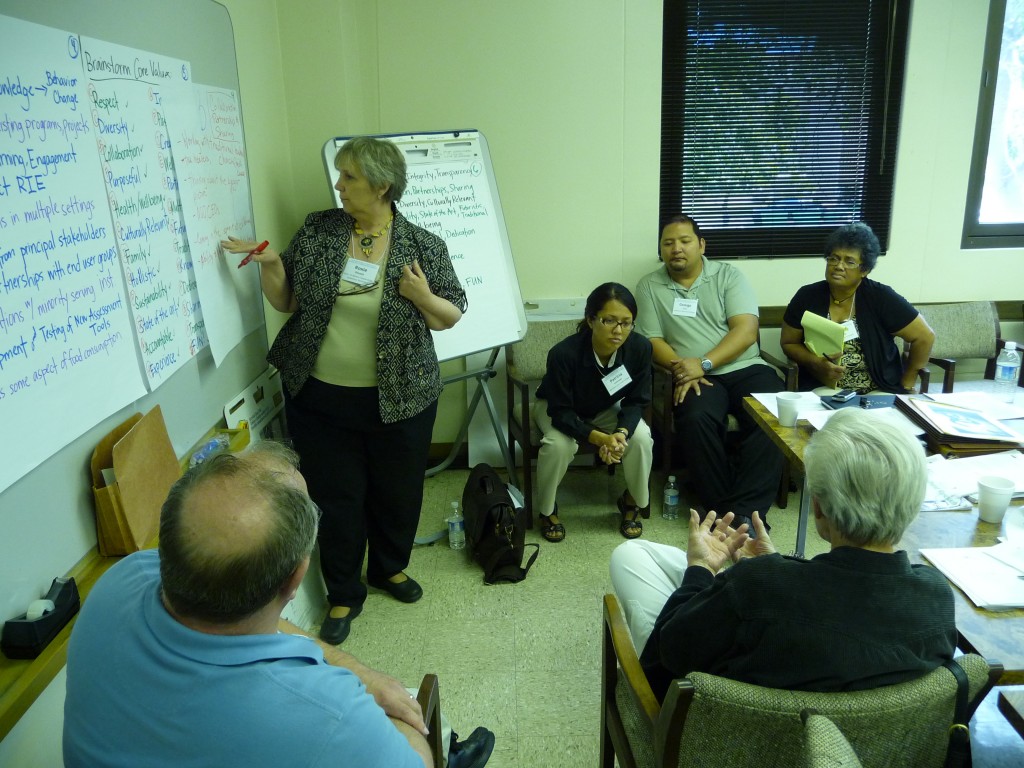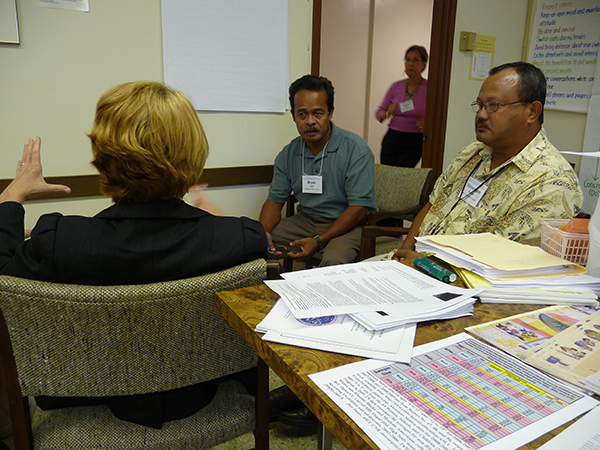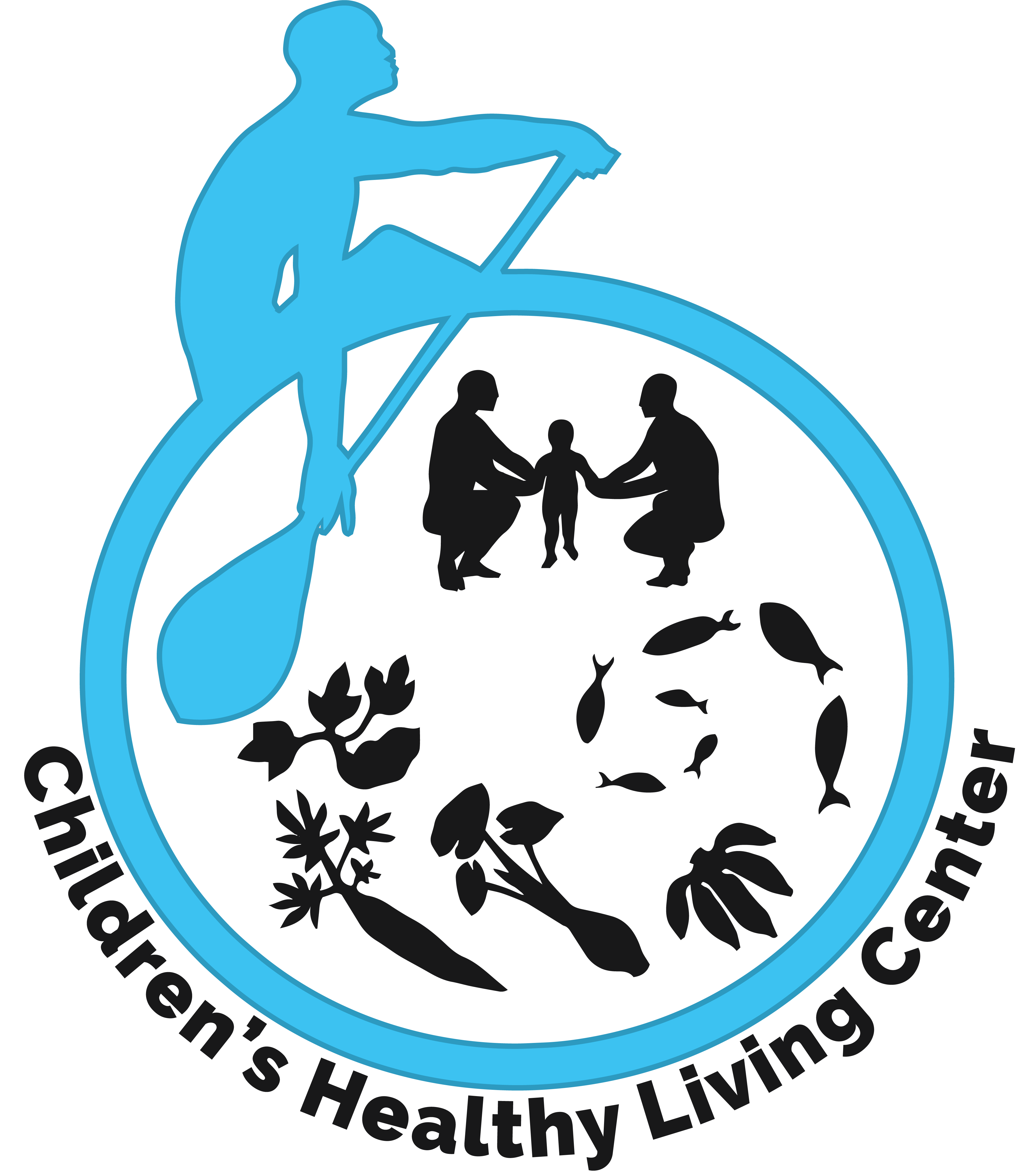HONOLULU. HAWAII. April 30 to May 2, 2010. Thirty researchers, extension agents, and health advocates from around the Pacific Region gathered at the conference room of the College of Tropical Agriculture and Human Resources at the University of Hawaii at Manoa, for 3-days of talks about childhood obesity in the region.

A number of facilitated discussions lead to a gathering of lists about available resources, projects now on-going, and what were some of the key aspects of childhood obesity for Pacific Island and Alaskan children. Discussions were lead off by this introduction by Dr. Rachel Novotny and one of many discussions lead to the list of ideas found below this introduction.
Introduction to Obesity Prevalence in the Pacific Islands
By Rachel Novotny
The prevalence of overweight and obesity in the Pacific Islands is estimated at 60 to 90% of the adult population. Few data are available on children in the US Affiliated Pacific region, which is not included in the US National Health and Nutrition Examination Survey (NHANES). Our data show rates of 45% among 7-9 year old children (Paulino et al 2008), higher than levels seen on the mainland US. The Pacific region is composed of thousands of very remote islands, creating an extremely fragile food system, with population centers separated by thousands of miles of ocean. In such environments, it is vital to have a very thoughtful, environmentally appropriate and sustainable food production and distribution system that contains healthy foods that are physically and economically accessible to the population. There are few professionals in these regions that trained to develop, monitor and evaluate effective multidisciplinary interventions to address the modern mix of food resource availability and demand.
Several previous projects have laid the groundwork for this multidisciplinary, multi-state coordinated agricultural program (CAP) to prevent child obesity. Especially relevant are the USDA-funded Healthy Living in the Pacific Islands Initiative (HLPI), which was sponsored by the Agricultural Development of the Pacific (ADAP). ADAP and HLPI link Land Grant Colleges around the US Affiliated Pacific, in nutrition and health priority setting and implementation, through a stakeholder driven process (Davison et al.2004). The USDA National Research Initiative (NRI) competitive grant, HLPI- Healthy Pacific Child Program (HPCP) developed dietary assessment tools for the region (the Pacific Tracker, PacTRAC) that contains the local tropical foods and dishes (Martin et al. 2008, Murphy et al.2009), which is now available on a publically-available website (HawaiiFoods http://hawaiifoods.hawaii.edu); conducted food store based intervention (Gittelsohn et al 2010), which improved child diet and parent perceptions about healthy eating; and conducted a population-based nutritional assessment of 6mo- 10yo children in the Commonwealth of the Northern Marianas Islands (Paulino et al. 2008) which provides basic data on eating patterns and nutritional status to guide program and policy planning. A current USDA NRI grant, Pacific Kids DASH for Health (PacDASH), collaborating with the University of Hawaii’s Medical School and Kaiser Permanente well child clinics, examines multilevel influences on child obesity, as well as tests an intervention targeted to the child, parent and physician, in order to provide fruit/vegetable and physical activity advice according to child’s stage of readiness to make change in a socio-ecological framework (McLeroy et al.1988).
Literature Review
Davison N, Workman R, Daida YG, Novotny R, Ching D. 2004. Healthy living in the Pacific Islands: Results of a focus group process to identify perceptions of health and collaboration in the US Affiliated Pacific Islands. Journal of Extension 42(5):1-11.
Gittelsohn J, Vijayadeva V, Davison N, Ramirez V, Cheung LWK, Murphy S, Novotny R. 2010. A food store intervention trial improves caregiver psychosocial factors and children’s dietary intake in Hawaii. Obesity 18: S84–S90.
Martin CL, Murphy SP, Novotny R. 2008. The contribution of dietary supplements to nutrient adequacy among children in Hawaii. Journal of the American Dietetic Association 108(11): 1874-80.
McLeroy, K., Bibeau, D., Steckler, A. and Glanz, K. (1988). An ecological perspective on health promotion programs. Health Education Quarterly 15: 351–377.
Murphy SP, Martin CL, Davison N, Cheung L W-K, Au DL, Novotny R. 2009. A Comparison of Two Systems for Entering and Assessing Dietary Data for a Research Study. Journal of the American Dietetic Association 109: 905-908.
Paulino YC, Coleman P, Davison NH, Lee SK, Camacho TB, Tenorio LF, Murphy SP, Novotny R. 2008. Nutritional characteristics and body mass index of children in the Commonwealth of the Northern Mariana Islands. Journal of the American Dietetic Association 108(12): 2100-4
Regional Issues, Strengths, and Challenges Surrounding Childhood Obesity
[Notes from Facilitated Discussion]
Is Childhood Obesity a Concern in Our Region?
- There is some data about obesity in the region, but need to compile more and find a systematic way to collect in the future. Need to tap a variety of sources (e.g. WHO, SPC, Brown University).
- Refine the definition of obesity so that is reflective of the Pacific culture. Are there existing definitions that do that?
- Are there common means or systems that assess/measure obesity that transcends jurisdictions?
- Are we only focusing on childhood obesity or are we including other health/disease issues?
- For our region, desire for an enhance view of child obesity that includes other factors (e.g., social, medical), which will result in different measurements during an assessment.
Key Features of a Regional Research and Extension Program
- Focus on obesity PREVENTION.
- Clarity about whether objective is to reduce incidence of childhood obesity, or promotion of health.
- Need for active management over time to steer project if intent is to reduce incidence.
- Look toward system-wide change.
- Need for sustainable interventions.
- Program must be transformational, such as a comprehensive, integrated environmental model.
- Program must be knowledge-based (science-based), but action (or behavior) focused.
- Build on relationships with existing programs and projects.
- Based on discovery, learning, and engagement to conduct instruction, research, and evaluation.
- Combining interventions in multiple settings.
- Have both expertise from principal stakeholders, and partnerships with end user groups.
- Based on collaborations, and testing of new assessment tools. • Address some aspect of food consumption.
Regional Strengths/Challenges
- Highlight our uniqueness because traditional diets in our region/area are more expensive, not as available, etc.
- Acknowledge up and down side of “uniqueness” argument. Furthering new knowledge is a benefit.
- Genomic studies in the region that show significant difference between populations (in Pacific and Alaska).
- Social institutions (such as caregiver and community relationships) have contributed to obesity, and must be addressed.
- There is an opportunity in the project to address policy issues (e.g. banning bad food). Any work really needs cross-sector buy-in to have this kind of impact. The region has many existing associations that we can tap. Also, any work needs top- level community buy-in and may require program to liaison with groups/associations (church, community, women’s groups, etc.). We might want to think about engaging those who market food to children.
- Sometimes we deal with key policy makers and the message/effort does not trickle down to the people who we need to impact
- Need to have top-down and bottom-up activities. Also, need to engage many stakeholder groups.
- Educational programs (Certificates, 2-yr, BS, MS, or PhD) must undergo a paradigm change: Rather than sending people out of the region to received advanced training or education, we need to use resources to bring people into community colleges and other educational institutions. Previous work has provided lots of training, but was episodic and did not result in sustainability.

